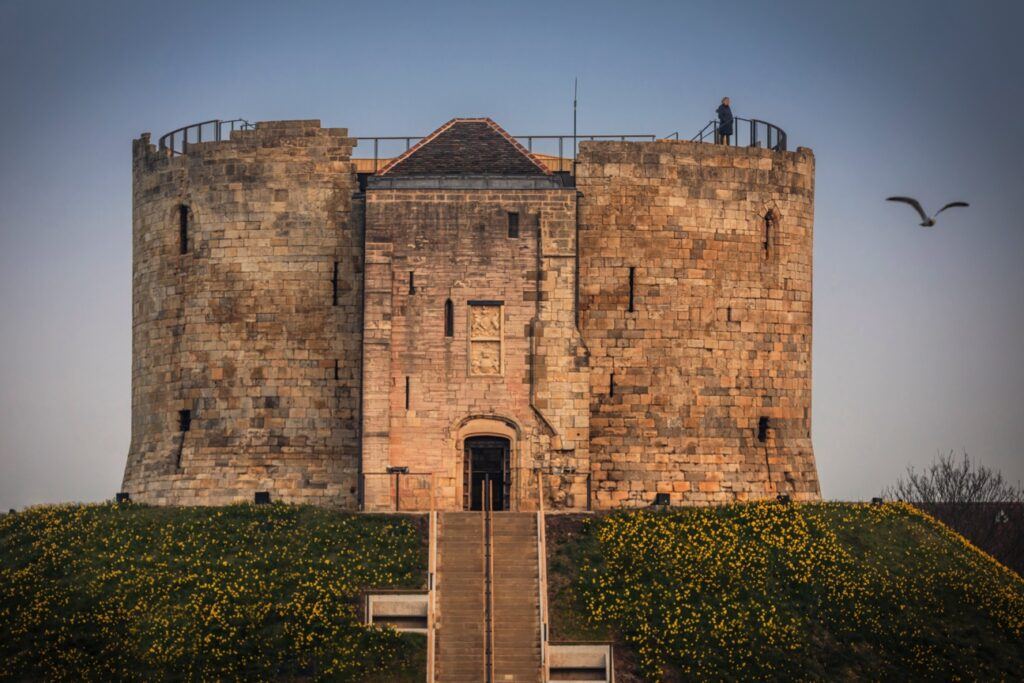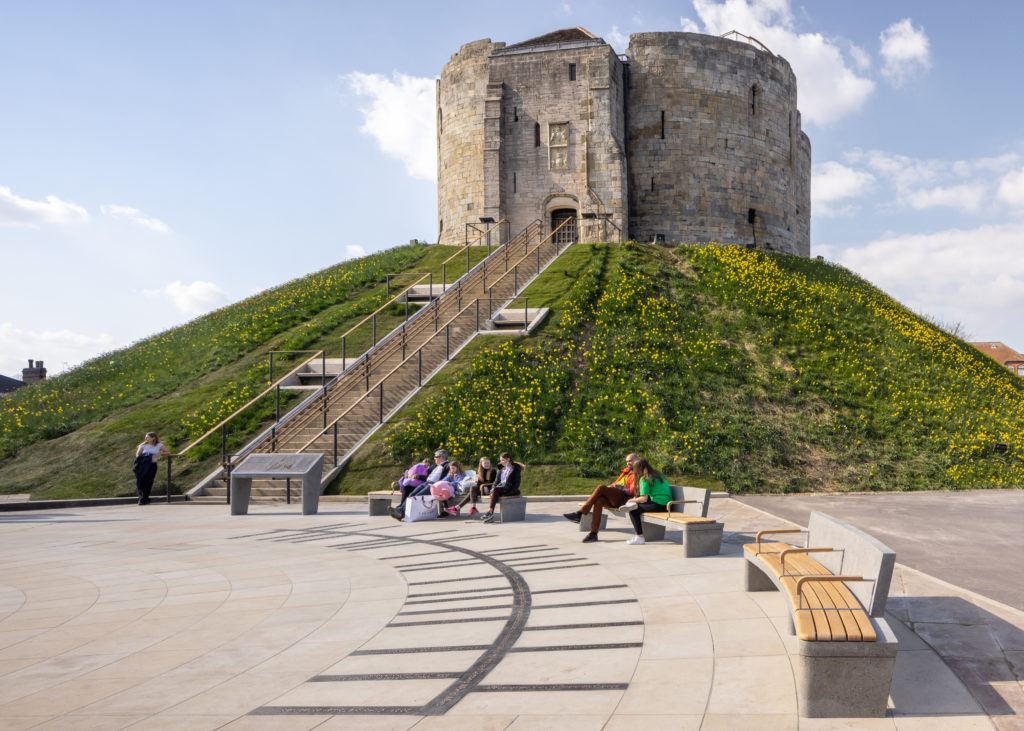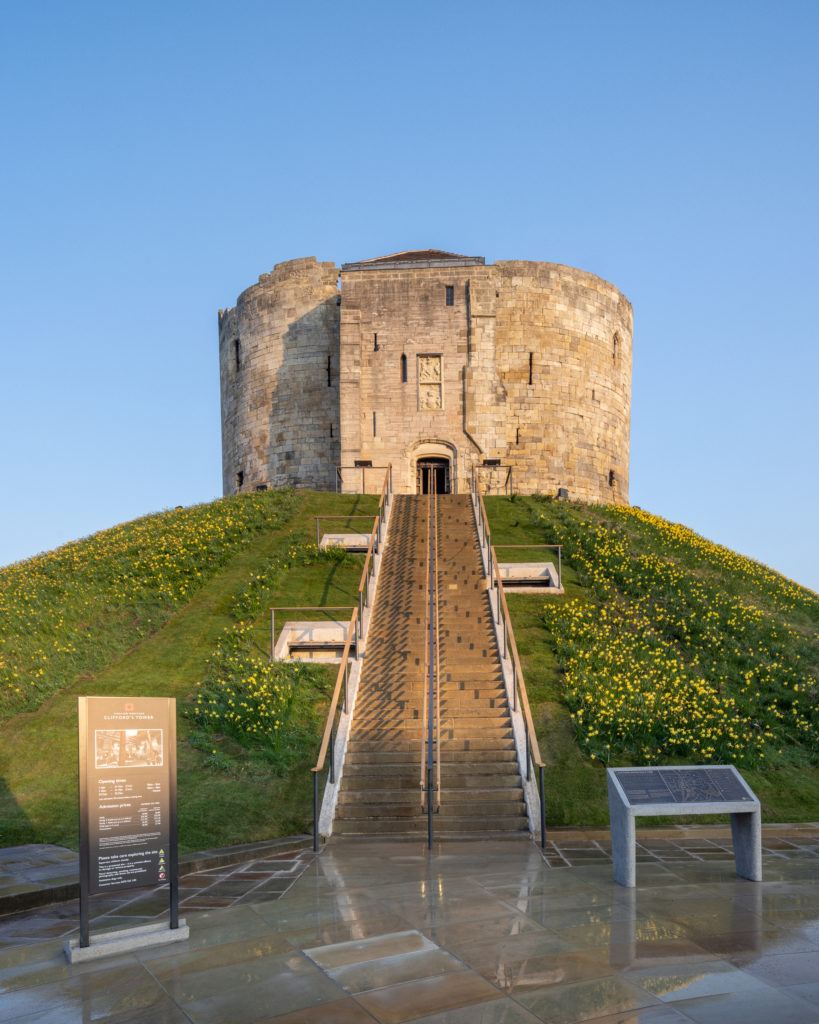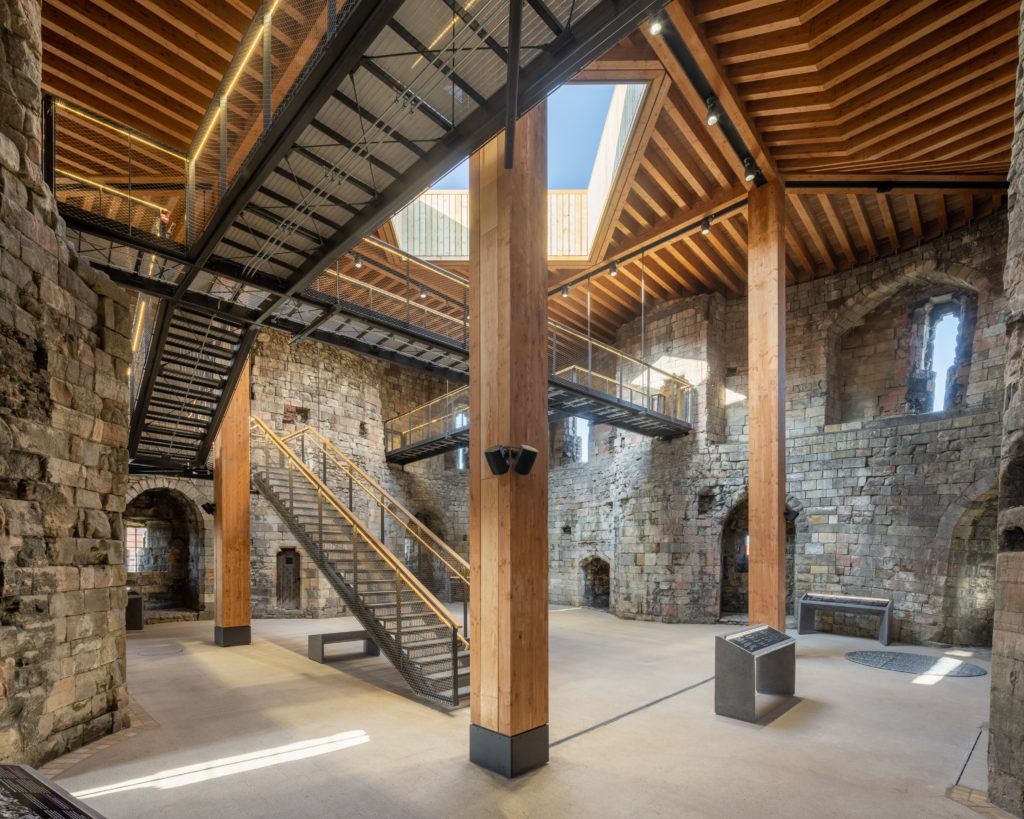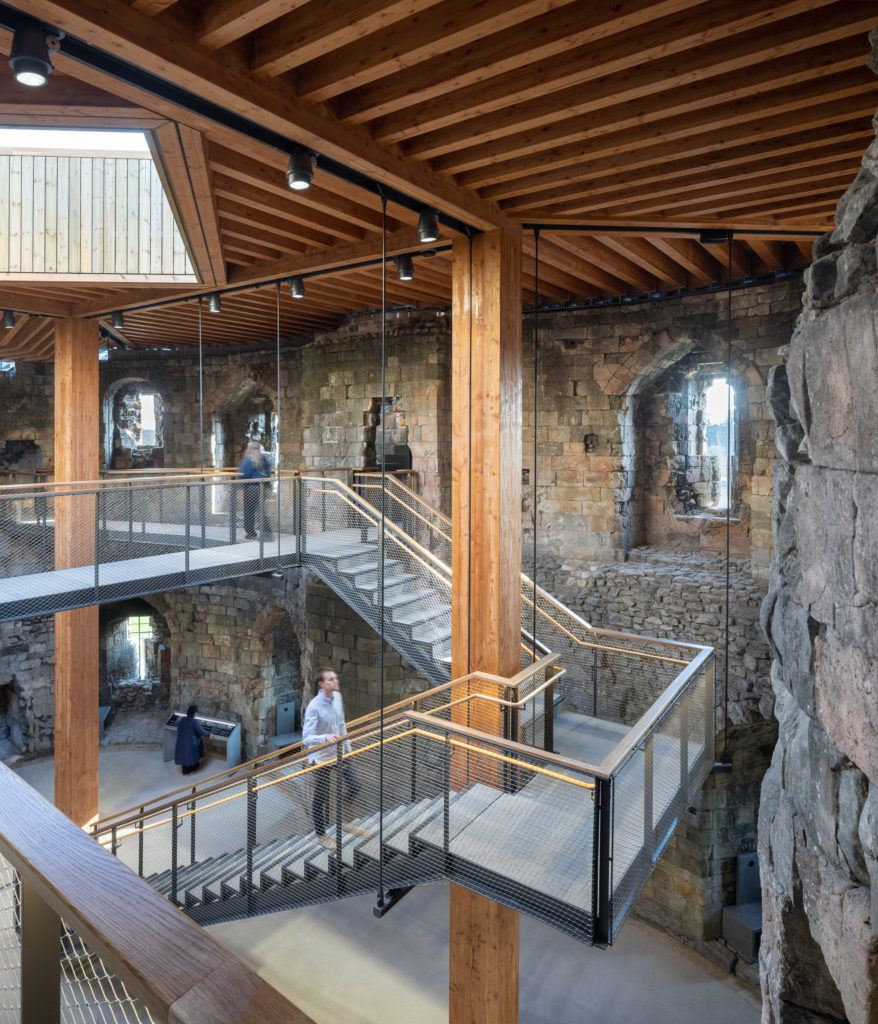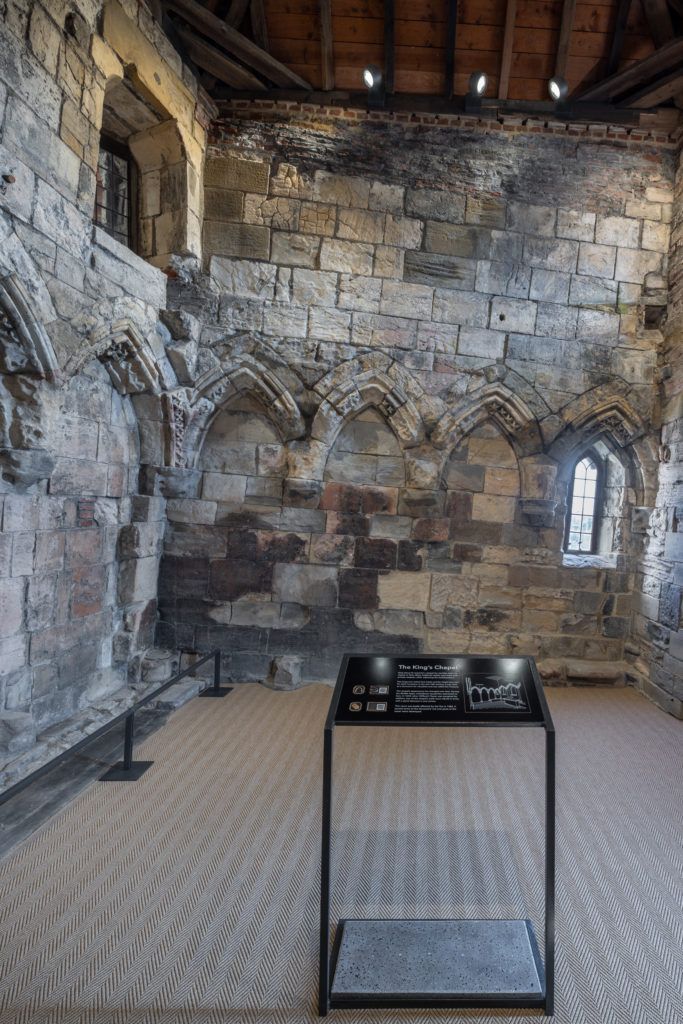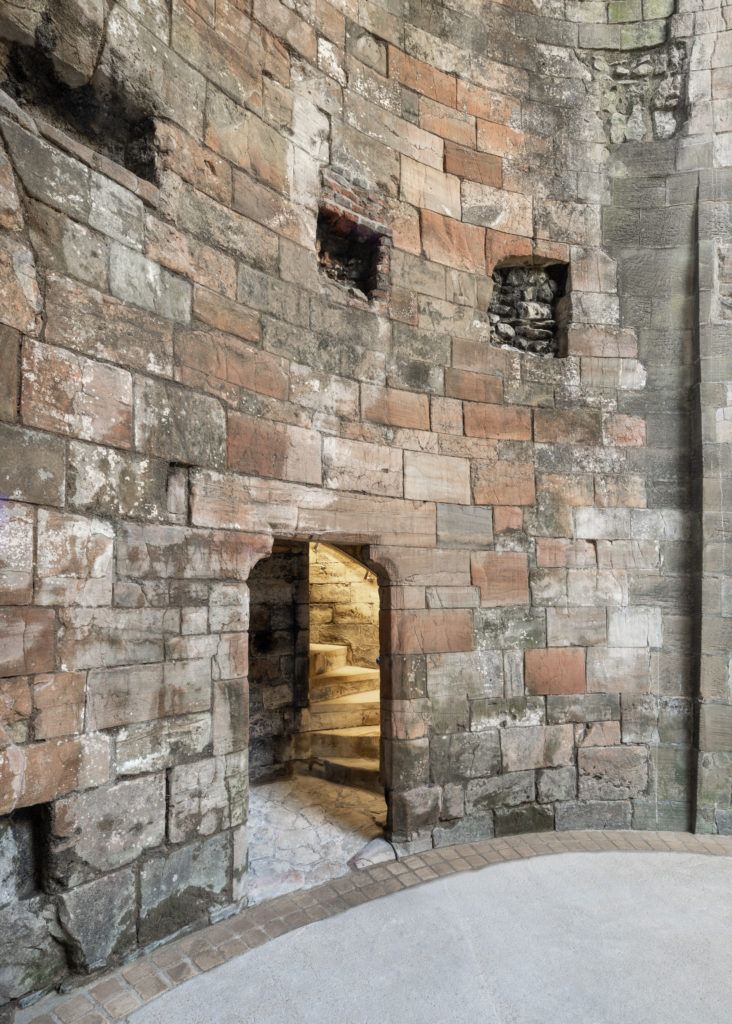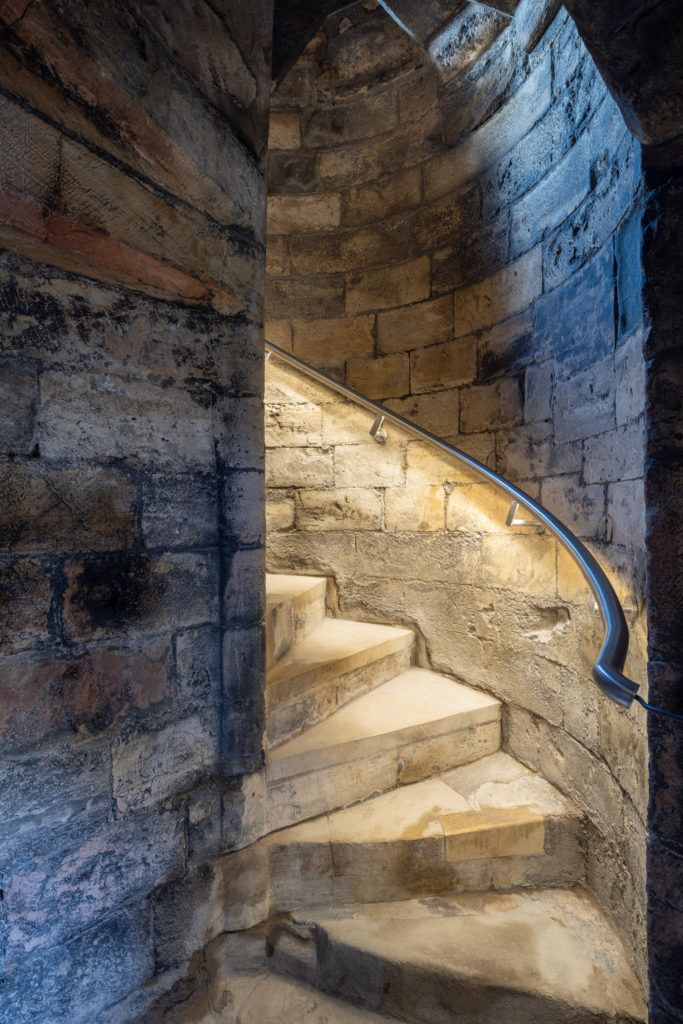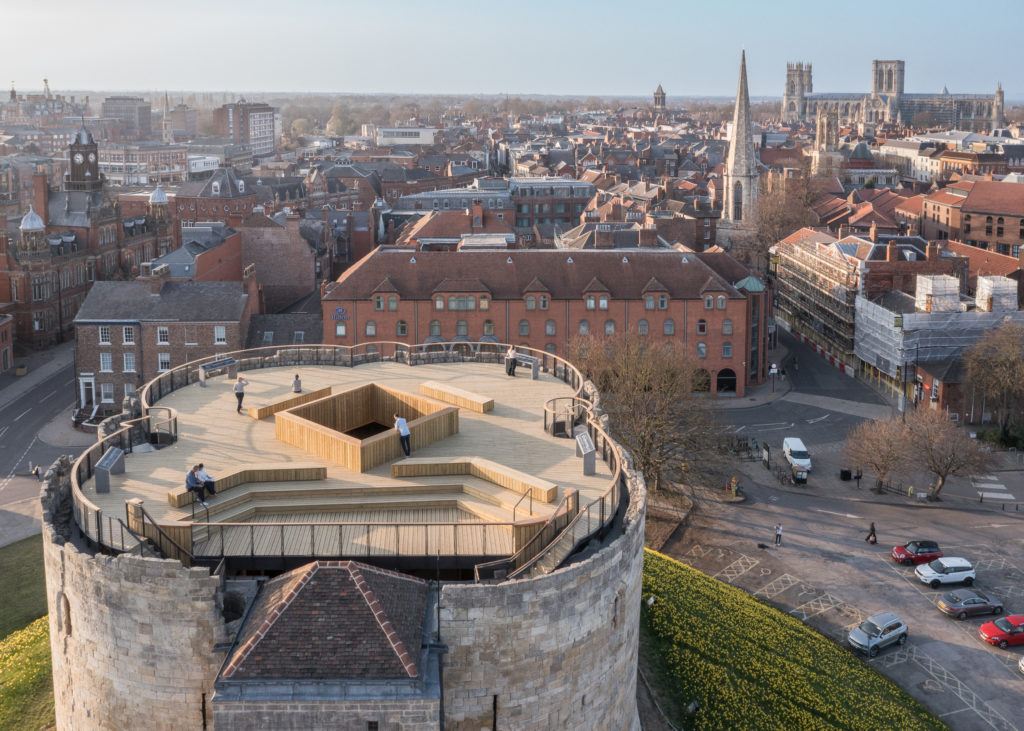Clifford’s Tower, York
The end of the October half term holiday also sees the end of the main tourism season in the UK, and with it an opportunity to look back at one of our highlights of 2022 – the re-opening of Clifford’s Tower in York as one of the country’s outstanding visitor attractions.
Thanks to a £5 million project by English Heritage to conserve and radically transform the interior of the 800 year old landmark, visitors to York have been able to experience Clifford’s Tower as never before. We were privileged to be part of the design team (Conservation Architects) alongside Hugh Broughton Architects (Design Architects & Lead Consultant) working together to safeguard the future of the Scheduled Ancient Monument and enhance the visitor experience.
The 13th century Clifford’s Tower is almost all that remains of York Castle, and was gutted by fire in 1684. Since then it has stood as an evocative ruin, with many of its most interesting features out of reach. Today a new free-standing timber structure within it protects its walls from the elements, and supports a new roof deck to provide magnificent views over York. The new deck, as well as new staircases and walkways, was carefully designed to avoid interfering with the tower’s medieval masonry and archaeology beneath, and achieves a delicate balance between conserving historic fabric and intervening to enable a greater understanding of an extraordinary heritage asset.
As well as the more obvious interventions that can be seen today, we also carried out a programme of urgent holding repairs as conservation architects to stabilise the exceedingly fragile fire damaged internal wall surfaces. Working with a specialist stone conservator, every single stone was tested to ensure it was sound – a painstaking process that took several days. We are proud that we were able to retain every single damaged stone, because history lives in the surface of historic materials. In addition, Clifford’s Tower is now stable – and thanks to the ingenuity of structural engineers Ramboll the means of achieving this stability are concealed from view.
As a result of our work with English Heritage and Hugh Broughton Architects, public access at Clifford’s Tower has been transformed. As well as the roof deck, the project has enabled the public to see previously hidden parts of Clifford’s Tower – including a water closet built especially for King Henry III. The atmospheric royal chapel has been restored, alongside two projecting staircase turrets which have been brought back into use to enhance public access. Heraldic plaques above the entrance which speak of the Tower’s historic status have also been conserved.
Our project at Clifford’s Tower was undertaken through careful yet productive discussions with Historic England, and with the unfailing support of our brilliant client English Heritage.
We are very proud of the outcome which combines historic building conservation, enabling public access and understanding, and the beneficial re-use of historic fabric and spaces.



